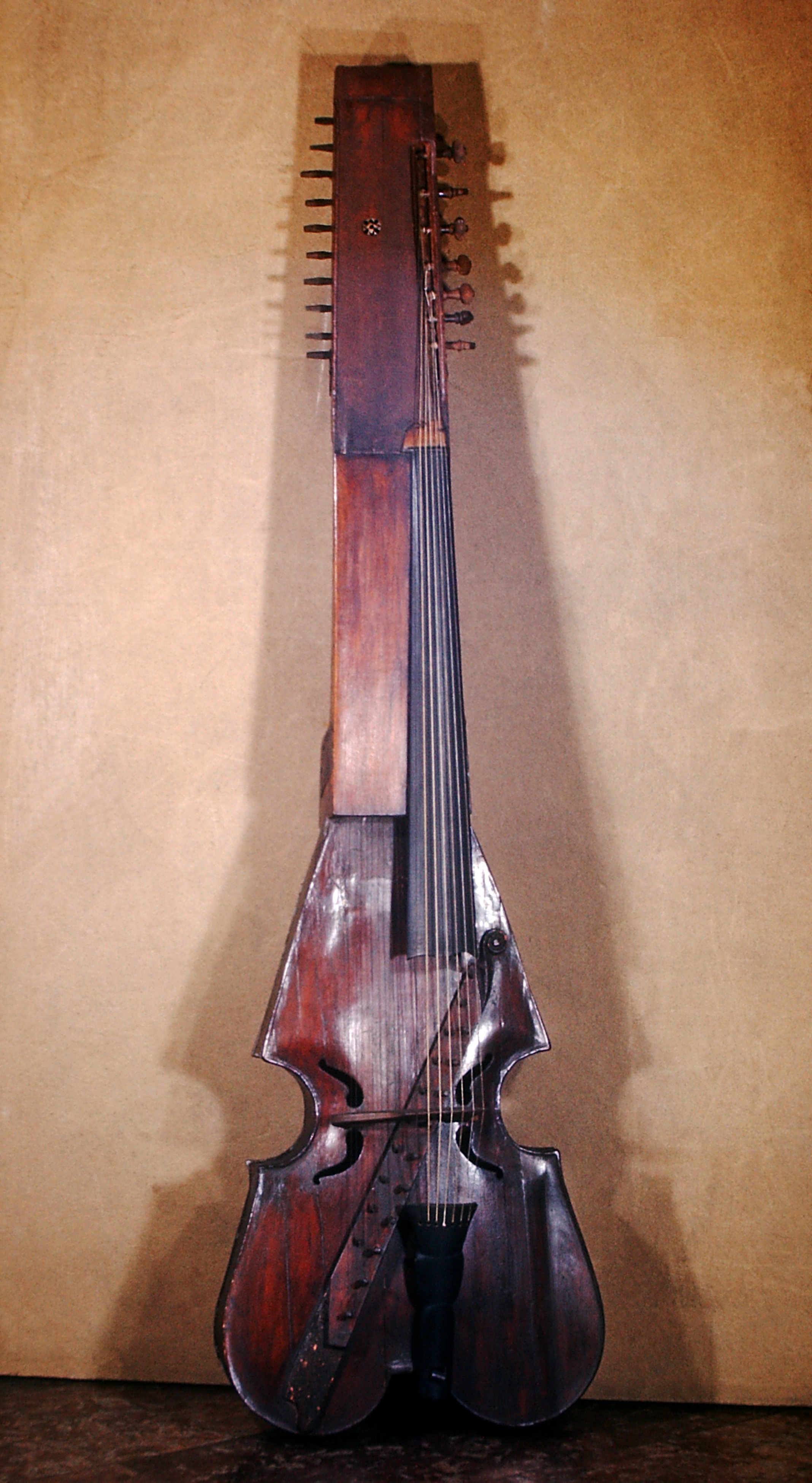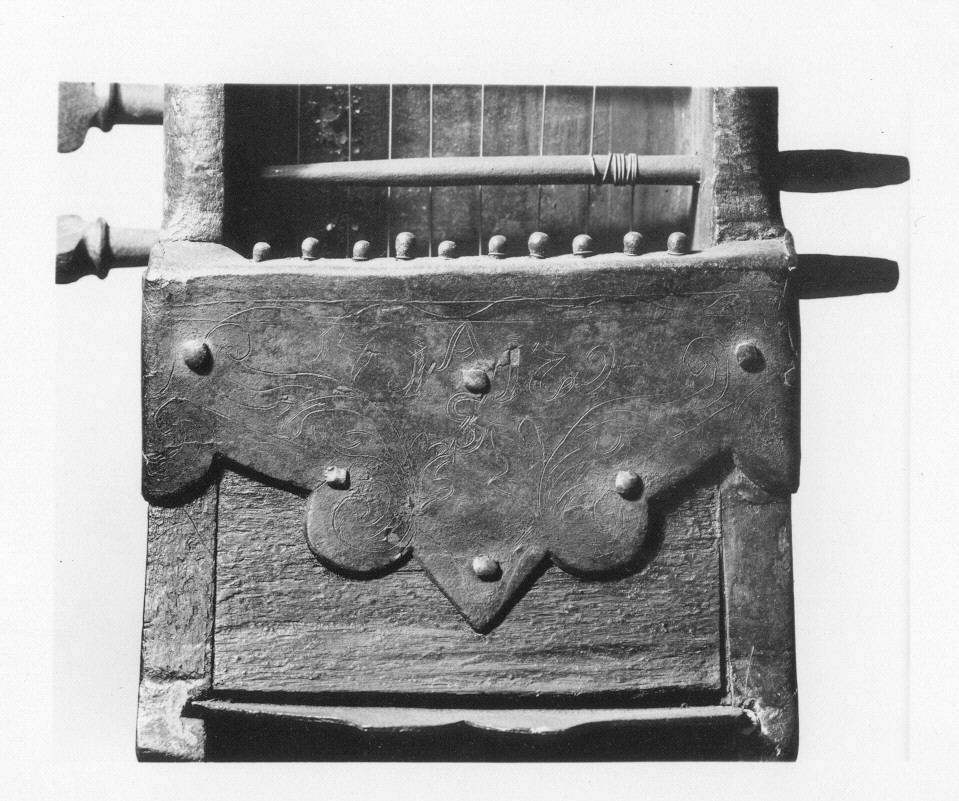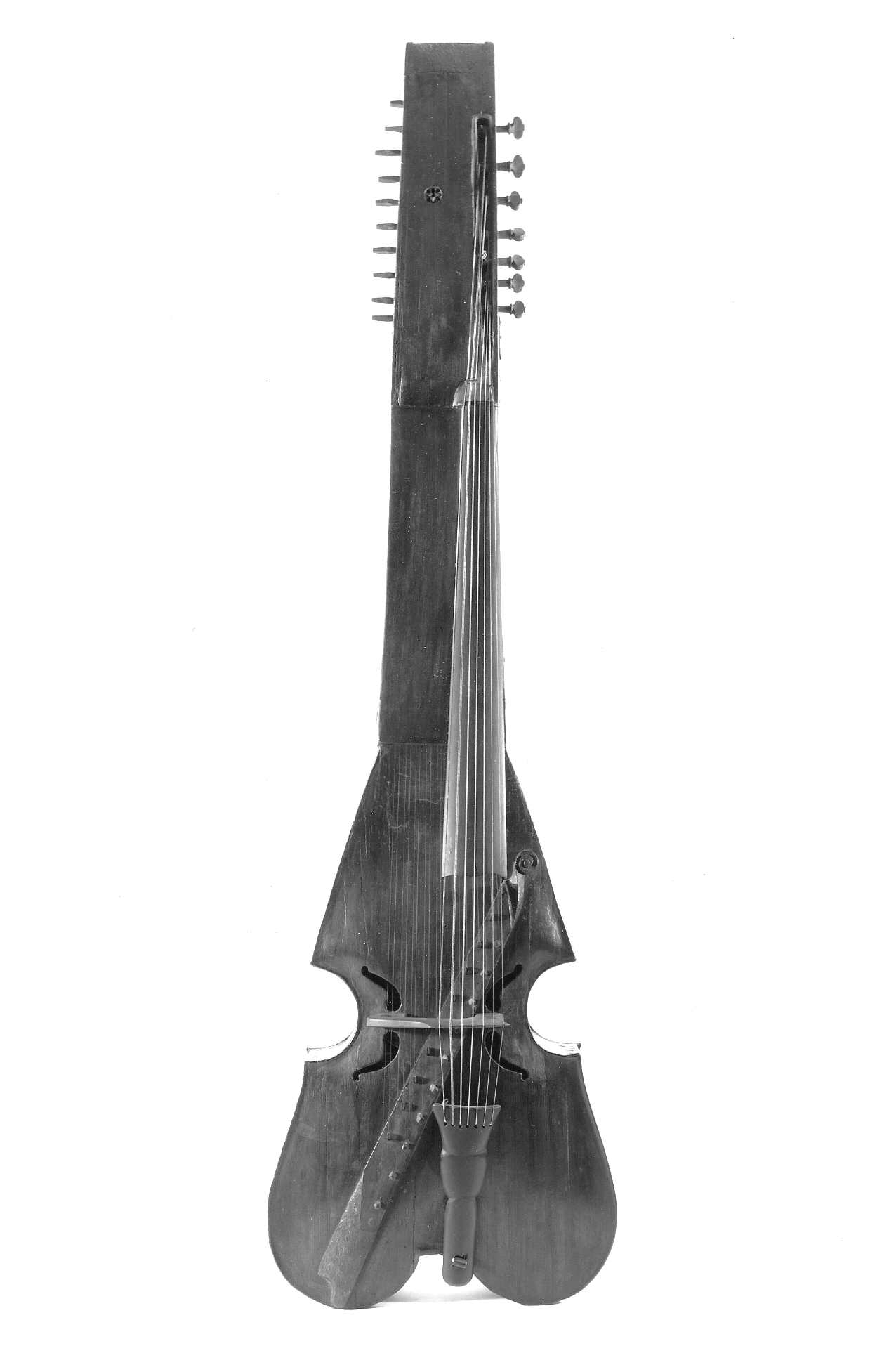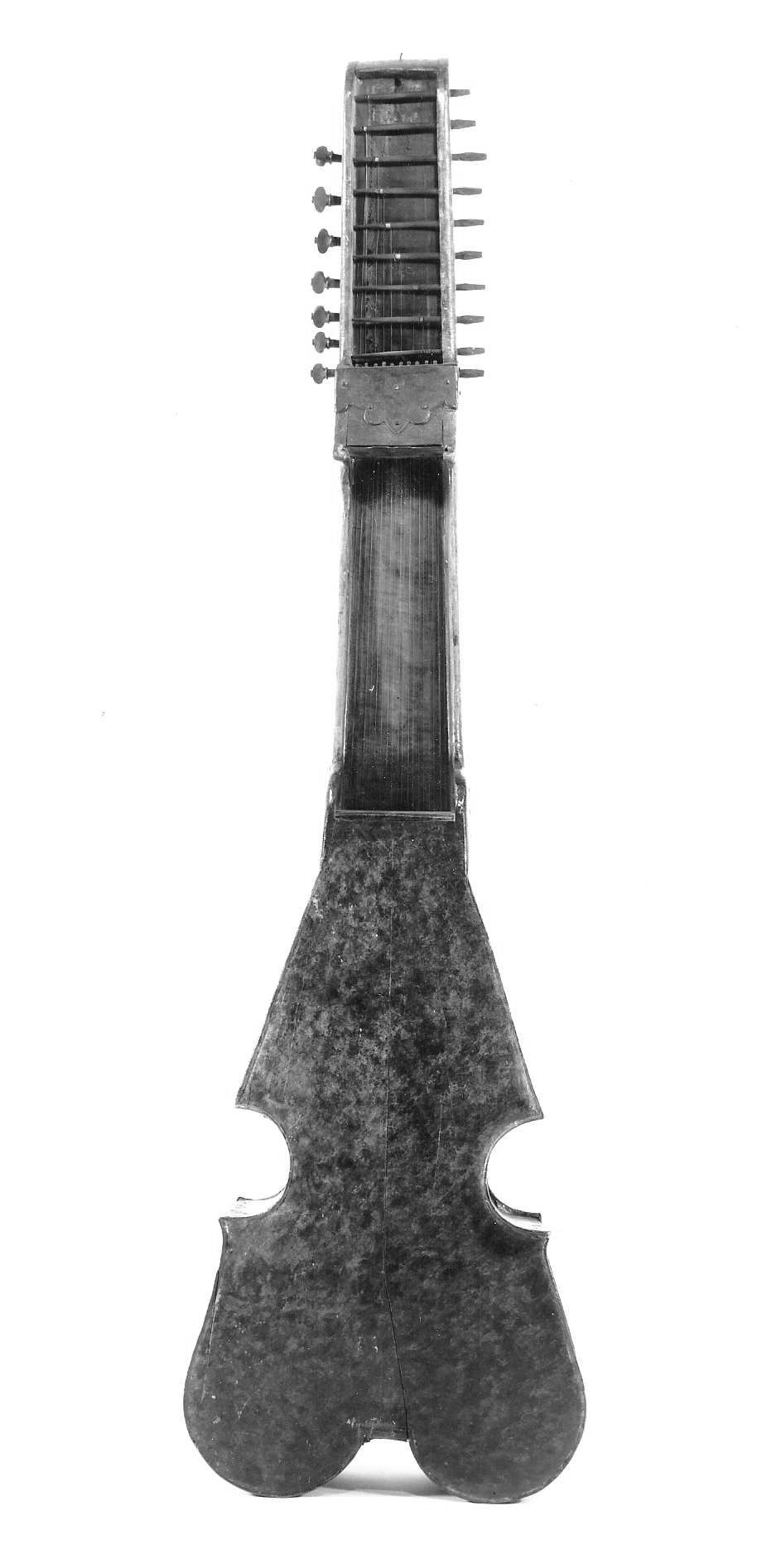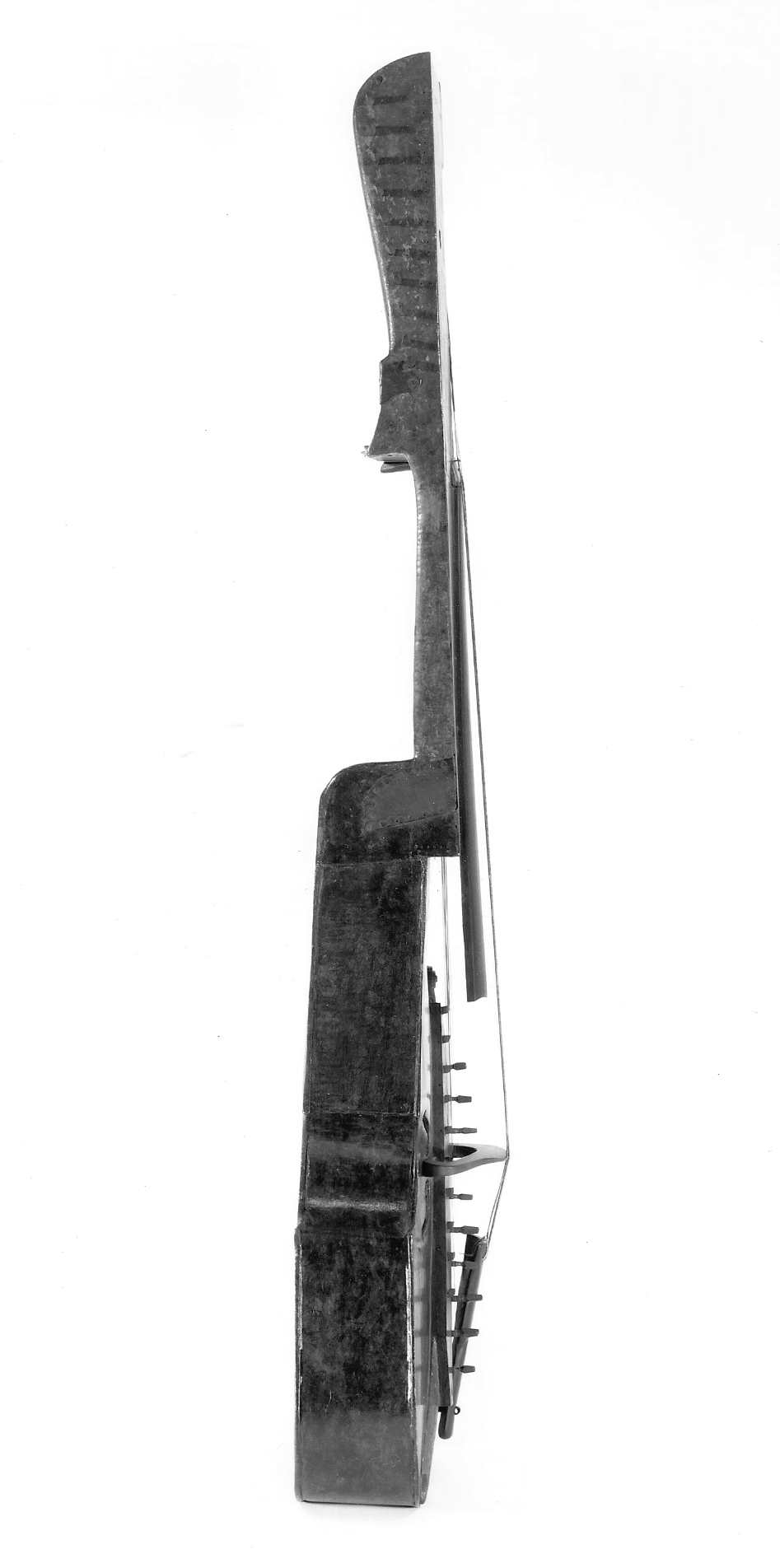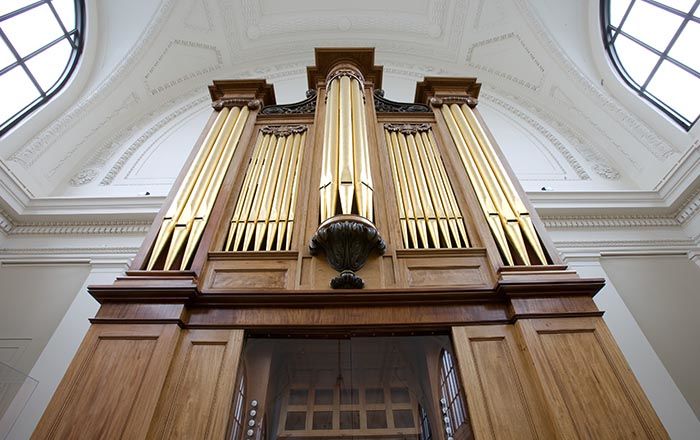Baryton
attributed to Johann Joseph Stadlmann Czech
Not on view
The baryton is a bowed instrument similar to a bass viola da gamba with the addition of sympathetic strings. This is an unusual form of the instrument that has been attributed to the Viennese maker Johann Joseph Stadlmann. Joseph Haydn wrote 175 pieces for Prince Nikolaus Esterházy to play on his baryton. Most were for an ensemble that included viola, cello, and baryton.
Description: Table of spruce in two pieces with two added wings, two divided C holes, no purfling but with channeling bouts, the upper end with a small ornamental scroll, the bar holding ten tuning pegs and ten string rests for the twenty sympathetic strings; a bridge, horizontally dividing the C holes, supports seven bowed strings; table indented at the lower bout for tailpiece pin; bass bar original, but heavily reinforced; string holder held in bar by friction and string tension; back of birch in two pieces, with deep channeling on the edge; ribs of plain birch; neck of maple in one piece extending to the pegbox and top, with a spruce "table" over the pegbox bearing small rosette of parchment in a four-point star; modern ebony fingerboard and tailpiece; pegs and tuning pins original; sympathetic strings, ten of copper and ten of steel wire, extend behind the fingerboard, the steel ones higher (for plucking?) and the copper lower, and pass through an engraved metal plate of simple pattern, and are fastened by nails; dark reddish-brown varnish with tortoise shell mottle on ribs and back.
This image cannot be enlarged, viewed at full screen, or downloaded.
This artwork is meant to be viewed from right to left. Scroll left to view more.


